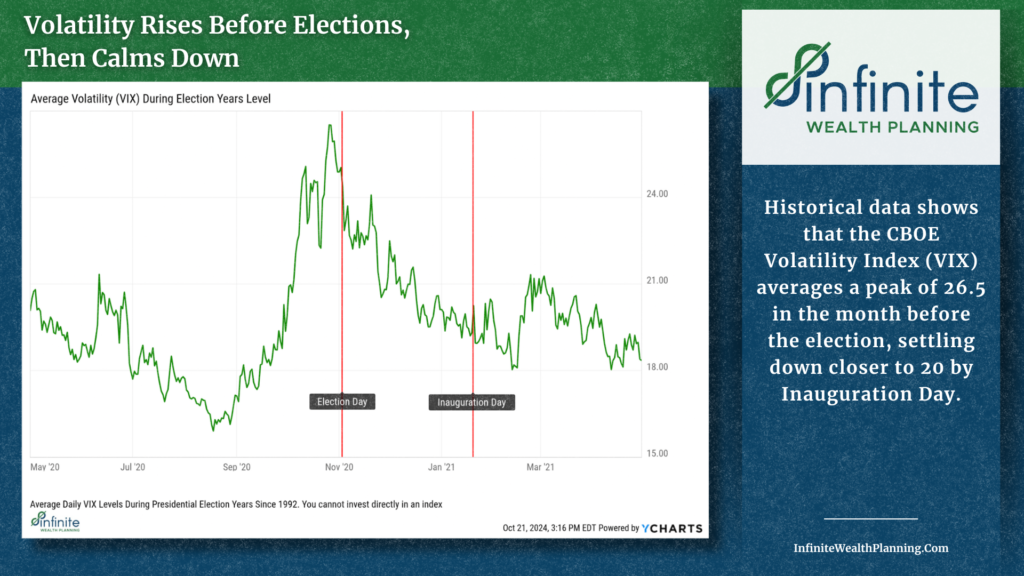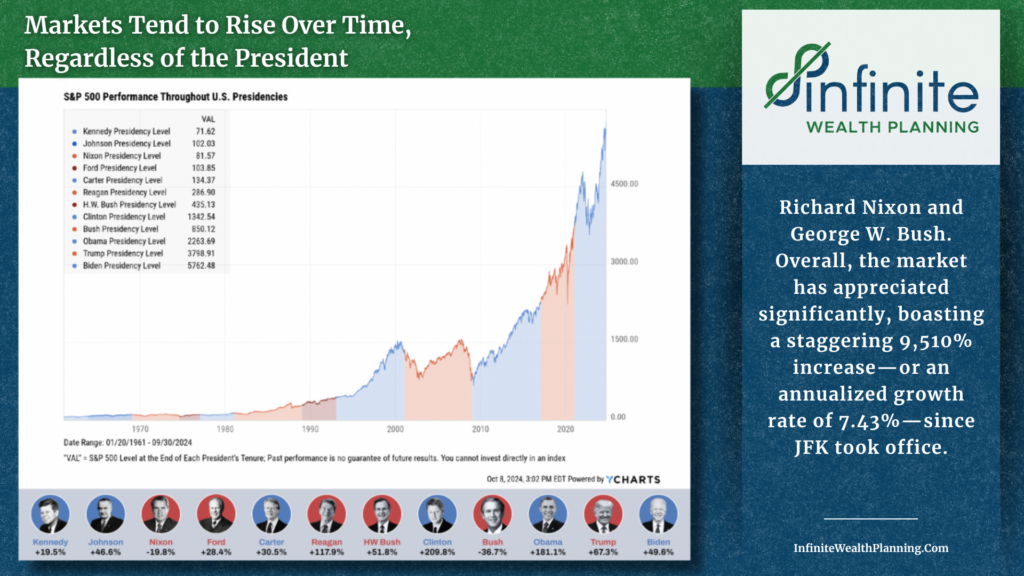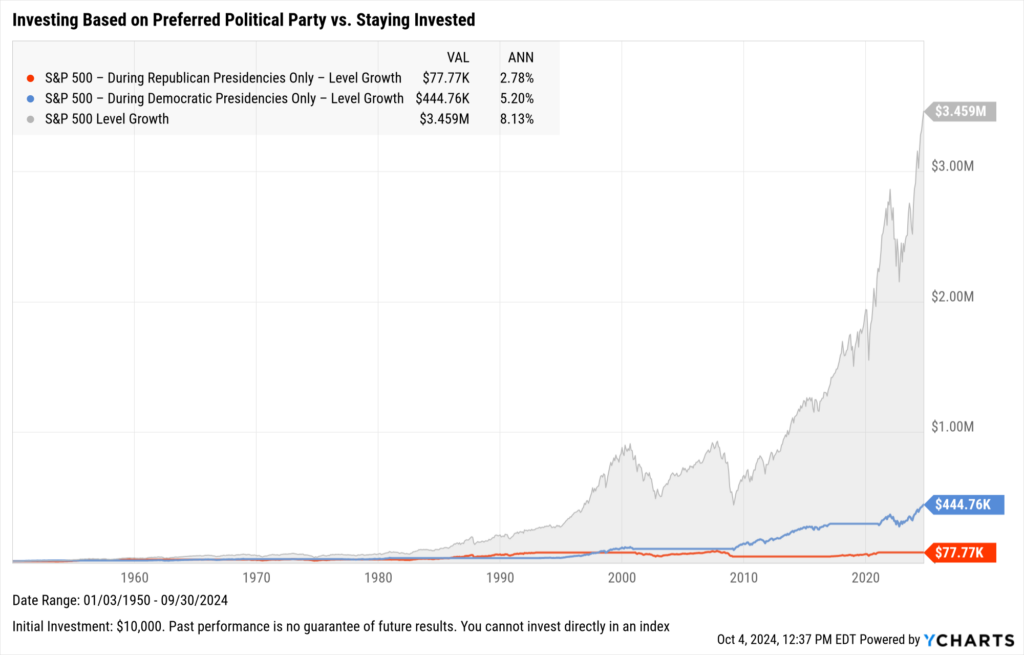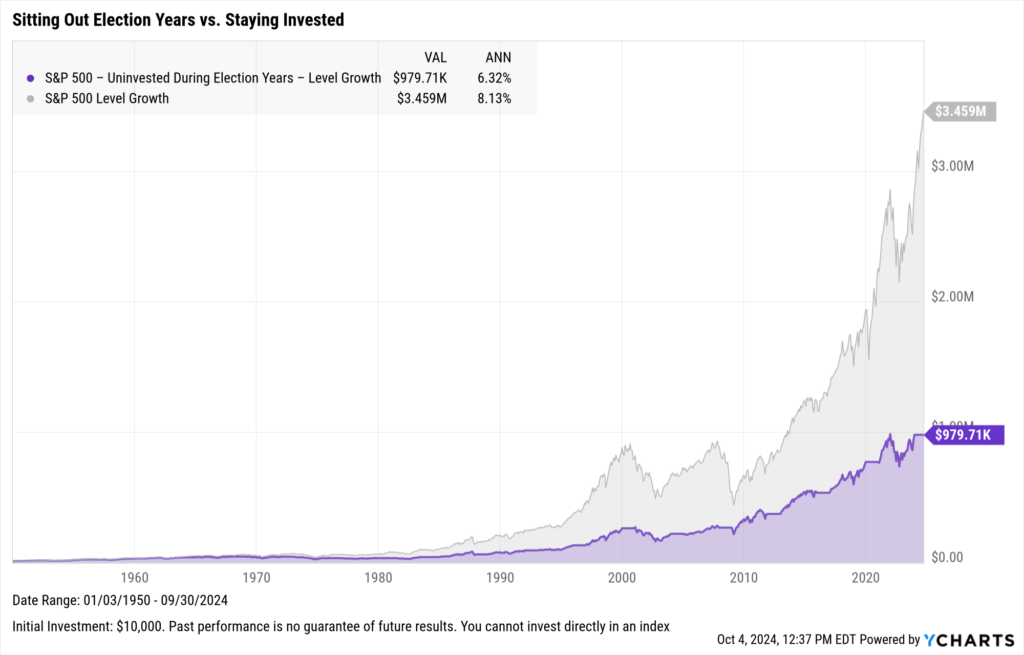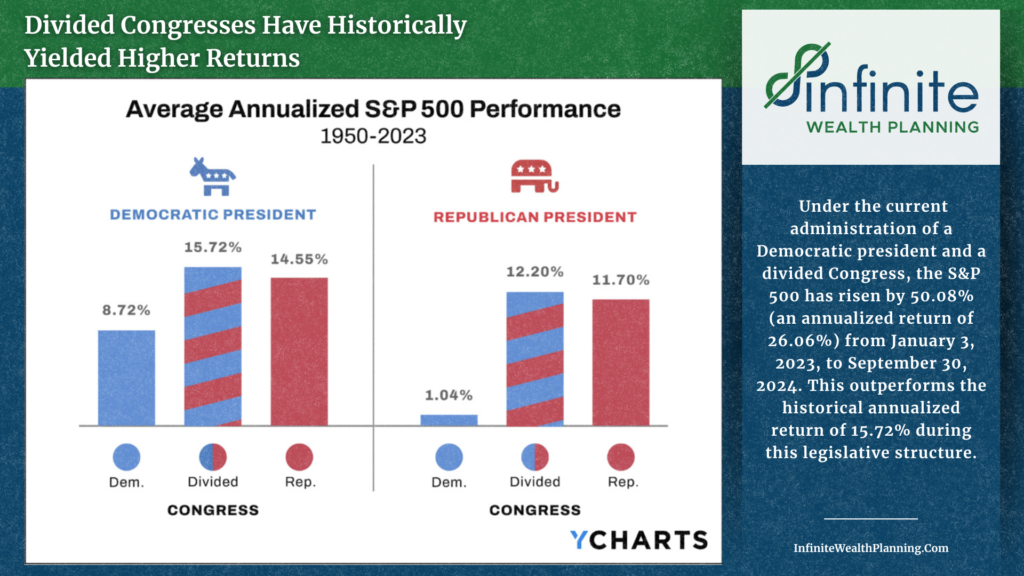The Election and Your Portfolio: What You Need to Know
Every four years, the anticipation surrounding the presidential election creates uncertainty for both advisors and their clients. This year is no exception, especially with the unexpected withdrawal of a sitting president from the race.
In this context, understanding how presidential elections can impact the market is crucial.
Here are some key insights to keep in mind:
Volatility Rises Before Elections, Then Calms Down
Regardless of the outcome, markets prefer certainty. As Election Day approaches, investors generally become more anxious. However, after the election, volatility often decreases during the transition period leading up to Inauguration Day. Historical data shows that the CBOE Volatility Index (VIX) averages a peak of 26.5 in the month before the election, settling down closer to 20 by Inauguration Day.
Markets Tend to Rise Over Time, Regardless of the President
Looking back to John F. Kennedy’s inauguration in 1961, the S&P 500 has posted negative returns during only two presidencies: Richard Nixon and George W. Bush. Overall, the market has appreciated significantly over the long-term, with a 9,510% increase—or an annualized growth rate of 7.43%—since JFK took office. For context, that means an investment of 10k in 1961 would be worth almost a million dollars today.
Staying Invested is Key to Long-Term Success
Adjusting your investment strategy based on a president’s political party can have a negative impact on a portfolio over time. If you only invested during Democratic administrations since 1950 and kept cash during Republican terms, your annualized return would be only 5.20%. Conversely, investing exclusively during Republican presidencies would deliver an even lower 2.78% per year.
Simply staying the course has historically provided the best outcomes.
Pulling your investments out of the market during election years can be harmful. Since 1950, shifting an all-S&P 500 portfolio to cash during presidential election years has resulted in a 1.81% lower annualized return compared to staying invested throughout.
Divided Congresses Have Historically Yielded Higher Returns
Generally, the highest average annualized returns occur when Congress is divided, with one party controlling the House and the other holding a majority in the Senate. In contrast, lower returns typically happen during periods of Democratic majorities in both chambers. Despite these fluctuations, the market has historically performed positively under all six government compositions.
While elections may introduce short-term uncertainty, it’s essential to remember that volatility tends to settle after the election, and markets usually trend upward regardless of who’s in office.
As advisors, maintaining a focus on long-term investing goals should always be the priority when making decisions for your clients.
Thanks For Reading! We Hope To See You Again!
For More Updates:
Advisory services offered through National Wealth Management Group, LLC, a Registered Investment Adviser. This information is intended for educational purposes and is not intended as a recommendation to buy or sell securities. Investing involves risk. Before investing, you should consult with a financial advisor to determine how a specific investment strategy fits your personal goals and objectives.


